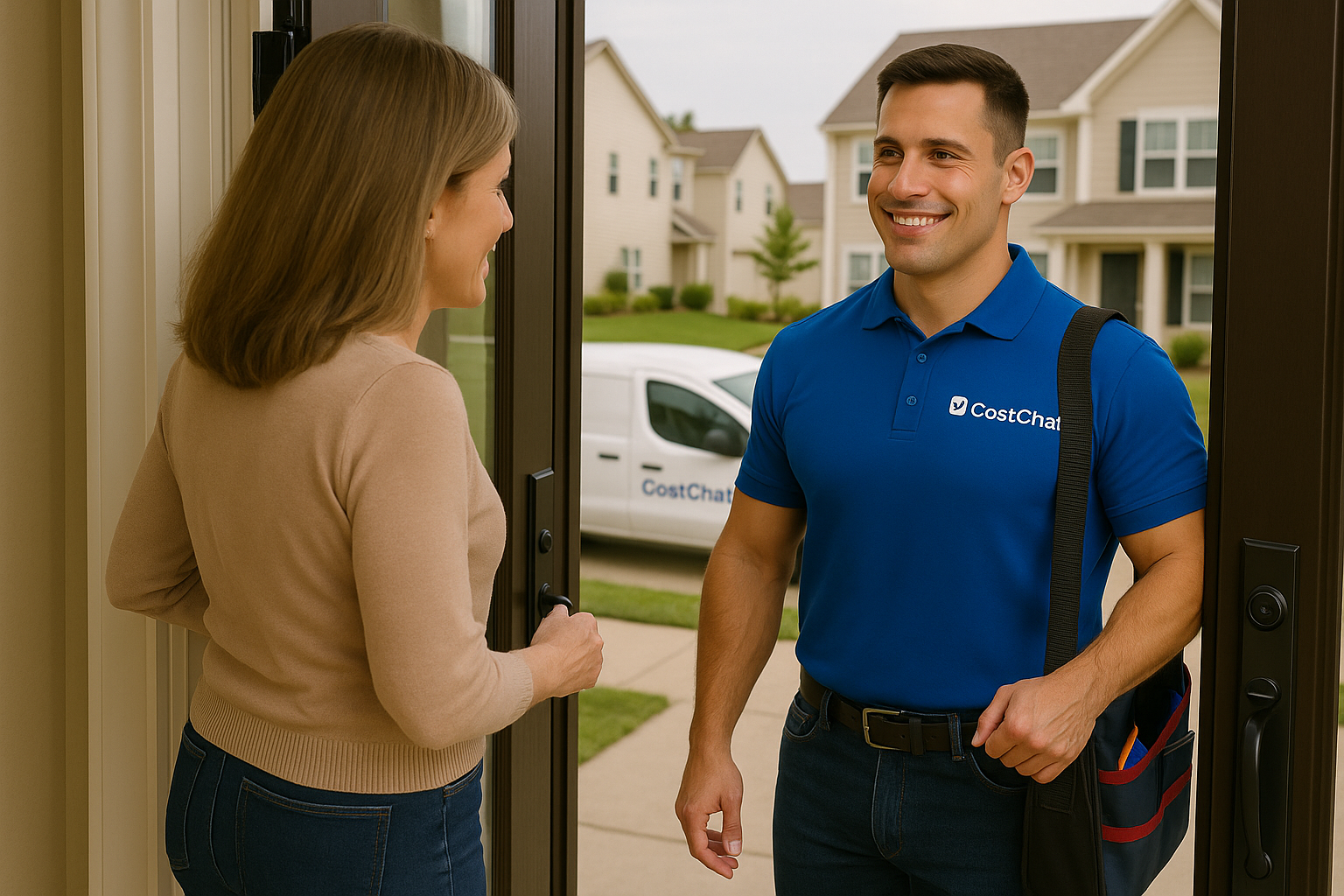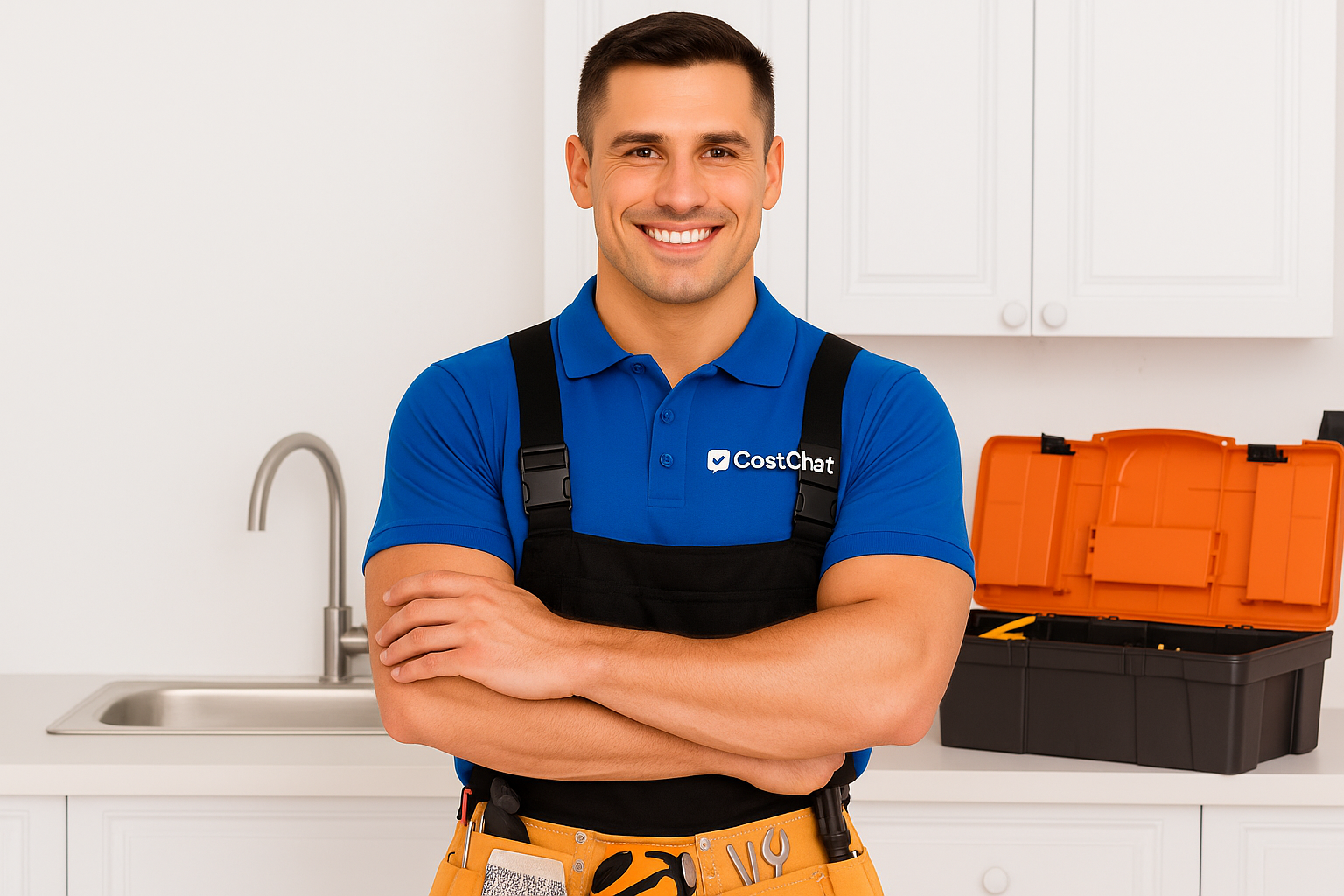
Your Go-To Trenchless Sewer Repair Team in Pittsburgh, PA
How to Hire Top Rated Trenchless Sewer Repair Pros in Pittsburgh, PA
Get a Free Online Estimate
Share your project details and receive a free online estimate from top-rated local pros. Not sure what it should cost? Check our Cost Guide.
Get EstimateCompare Local Quotes
View multiple free online quotes side by side. Use our Price Guide to understand labor rates, materials, and service fees before you hire.
Compare NowBook Best Top Rated Pros
Choose a licensed pro with confidence. Lock in your date after reviewing your free estimate and browsing our expert Cost Guide for peace of mind.
Book NowDid You Know?
74% ⚠️
of homeowners face surprise costs and delays — mostly from hiring unvetted pros. Don’t risk it. Hire trusted experts today.
Hire Top Rated & Verified ProsWork With Verified & Trusted Pros 🛡️
Save time, avoid costly mistakes, and experience reliable, top-quality service for every home project. Book now for priority scheduling and peace of mind.
Hire a Top Rated ProGet Instant Online Estimate of Trenchless Sewer Repair in
🔎 CostChat Online Cost Estimator
Describe your project and location to get an instant estimate.
Your Comprehensive Guide to Trenchless Sewer Repair in Pittsburgh, PA
For Pittsburgh homeowners, maintaining a healthy and efficient home is paramount. You take pride in your property, whether it's a historic Victorian in Shadyside or a cozy Craftsman in Squirrel Hill. When it comes to your home's essential infrastructure, like your sewer line, you need reliable solutions that fit the unique character and challenges of our city. Understanding the nuances of sewer repair, especially advanced methods like trenchless technology, can be complex. This guide is designed to equip you with the local knowledge and actionable insights needed to make informed decisions about your sewer system, ensuring peace of mind and the long-term integrity of your home.
Table of Contents
- Pittsburgh, PA's Unique Trenchless Sewer Repair Landscape: Why Local Expertise Matters
- Neighborhood Hotspots: Micro-Local Trenchless Sewer Repair Risks & Solutions
- Common Problems & Triggers for a Professional Trenchless Sewer Repair Call
- Navigating Trenchless Sewer Repair Regulations: Permits, Code & Professional Licensing in Pittsburgh, PA
- Maximize Your Savings: Trenchless Sewer Repair Rebates & Incentives in Pittsburgh, PA
- Choosing Your Trenchless Sewer Repair: Models, Sizing & Smart Features
- Cost of Trenchless Sewer Repair in Pittsburgh, PA
- Hiring Pittsburgh, PA's Top-Rated Trenchless Sewer Repair Professional: Your Action Plan
- Final Call to Action
- FAQs About Trenchless Sewer Repair in Pittsburgh, PA
Pittsburgh, PA's Unique Trenchless Sewer Repair Landscape: Why Local Expertise Matters
1.1 The Age & Character of Pittsburgh, PA Homes: A Trenchless Sewer Repair-Related Time Capsule
Pittsburgh's rich history is etched into its architecture, with a housing stock that largely dates back to the city's industrial boom. Many homes, particularly in established neighborhoods, were built between the late 19th century and the mid-20th century. This era of construction means that a significant portion of our underground infrastructure, including sewer lines, is also aging.
Homes constructed during different periods present distinct challenges for sewer systems:
- Late 19th to Early 20th Century (Victorian, Craftsman styles in neighborhoods like Squirrel Hill, Shadyside): These homes often feature original clay tile or early cast iron sewer pipes. Over time, these materials can degrade. Clay tiles are susceptible to cracking and root intrusion, while early cast iron is prone to severe corrosion, tuberculation (internal buildup), and eventual collapse.
- Mid-20th Century (Mid-Century Modern, Brick Row Houses in areas like Lawrenceville): While some homes in this era may have had upgrades, many still retain their original cast iron or early PVC pipes. Cast iron from this period can still suffer from corrosion and cracking, though perhaps less severe than older counterparts. Early PVC, while better than metal, can become brittle over decades.
The presence of original plumbing infrastructure in approximately 70% of Pittsburgh homes built before 1970 means that sewer line issues are not uncommon. Many older homes also have plumbing embedded within concrete slabs, increasing the complexity and risk of damage during excavation for traditional sewer repairs. Remodeling or additions can also strain these aging systems, highlighting the need for durable and reliable solutions like trenchless sewer repair.
1.2 Trenchless Sewer Repair's Environmental & Utility Factors & Climate Impact on Your Sewer System
Pittsburgh's humid continental climate significantly impacts underground infrastructure. With cold winters and moderate rainfall year-round, our sewer lines face unique stresses.
- Climate Impact: The frequent freeze-thaw cycles common in Pittsburgh cause the ground to expand and contract. This ground movement puts immense pressure on underground pipes, leading to cracks, joint failures, and even complete pipe collapse. Acidic soil conditions, also prevalent in parts of the region, can accelerate corrosion in metal pipes, drastically shortening their lifespan. Heavy rainfall, especially in flood-prone areas near the Allegheny River, can exacerbate existing pipe weaknesses and infiltration issues.
- Water Utility & Quality: The Pittsburgh Water and Sewer Authority (PWSA) sources water primarily from the Allegheny River. While PWSA ensures water quality meets EPA standards, the water does contain minerals. Over time, these minerals can contribute to scale buildup within pipes, reducing flow and potentially contributing to blockages, especially in conjunction with aging pipe materials. PWSA's ongoing efforts to address lead service lines are crucial for water quality, but the general mineral content and the age of our city's infrastructure are key factors in sewer line longevity.
These environmental and utility factors underscore why choosing a repair method that minimizes ground disruption and offers a durable, long-term solution is vital for Pittsburgh homeowners.
Neighborhood Hotspots: Micro-Local Trenchless Sewer Repair Risks & Solutions
Pittsburgh's diverse neighborhoods each present unique challenges for sewer infrastructure, influenced by their age, development patterns, and specific geological conditions. Understanding these micro-local risks can help tailor the best trenchless sewer repair strategy.
-
Squirrel Hill & Shadyside: Known for its historic Victorian and Craftsman homes, many sewer lines here are original cast iron or clay.
- Risks: Root intrusion is a major concern for clay pipes, while cast iron is highly susceptible to corrosion and cracking. Ground shifting in hilly areas can also stress buried lines.
- Solutions: Pipe lining (CIPP) is ideal for sealing cracks and preventing root intrusion in existing pipes. For severely deteriorated or collapsed lines, pipe bursting can replace the old line with a new, durable one with minimal excavation.
-
Lawrenceville & Strip District: These areas have a mix of older row houses and some commercial properties, with infrastructure that has seen significant wear and tear.
- Risks: Corrosion in metal pipes and potential blockages due to decades of use are common. In some older sections, combined sewer systems can lead to overflow issues during heavy rain.
- Solutions: CIPP lining offers a cost-effective way to restore structural integrity and prevent infiltration/exfiltration. For areas with frequent backups, relining can create a smoother, more resilient internal surface.
-
Beechview & Brookline: These neighborhoods feature a mix of housing stock, including many homes from the early to mid-20th century.
- Risks: Cast iron pipes are prevalent and often show signs of significant corrosion and potential joint leaks. Soil conditions can vary, impacting pipe stability.
- Solutions: Trenchless relining is excellent for addressing internal corrosion and minor cracks. If structural integrity is compromised, pipe bursting is a robust solution that can handle more severe pipe damage.
Common Problems & Triggers for a Professional Trenchless Sewer Repair Call
Detecting sewer line issues early is crucial to prevent costly damage. Many common problems are exacerbated by Pittsburgh's specific environmental factors and the age of our housing stock.
Recognizing the Signs of Trouble
- Recurring Drain Clogs: While a single clog might be minor, frequent backups in multiple drains signal a more significant issue within the main sewer line, such as partial blockages from corrosion or root infiltration common in older clay pipes.
- Slow Drains or Gurgling Sounds: These are early indicators of obstructions or partial collapses in your sewer line, often caused by internal pipe damage or buildup.
- Sewage Odors: Foul smells emanating from drains or basements are a clear sign of sewage backing up due to a break or blockage. This is a critical warning sign.
- Visible Sewage Backup: Experiencing sewage backing up into your toilets, showers, or floor drains is a dire emergency, indicating a complete or near-complete blockage or line failure.
- Wet Spots or Soggy Areas in Your Yard: Even without visible sewage backup, persistent wet patches in your yard, especially after rain, can indicate a sewer line leak underground.
- Green Patches in Lawn: Lush, unusually green patches in your lawn can sometimes indicate a sewer line leak where nutrient-rich wastewater is seeping into the soil.
- Foundation Cracks or Pavement Sinking: Persistent leaks from sewer lines can saturate the soil, leading to ground erosion and settlement, which can affect your home's foundation or nearby paved surfaces.
Underlying Causes in Pittsburgh
The lifespan of a sewer line varies greatly depending on the material and installation quality. However, in Pittsburgh, common issues stem from:
- Corrosion: Older cast iron and steel pipes are highly susceptible to internal corrosion, leading to reduced diameter and rough surfaces that trap debris. This process is accelerated by Pittsburgh's acidic soil.
- Root Intrusion: Tree roots seek out water and nutrients, often finding their way into hairline cracks in clay or even failing pipe joints. The dense tree canopy in many Pittsburgh neighborhoods makes this a persistent problem.
- Ground Movement: As mentioned, Pittsburgh's freeze-thaw cycles and soil conditions can cause pipes to shift, crack, or break at joints.
- Age and Deterioration: Simply put, many of the original sewer lines have reached or exceeded their expected lifespan.
If you suspect any of these issues, it's important to address them promptly. Familiarize yourself with warning signs that indicate a sewer line problem.
Navigating Trenchless Sewer Repair Regulations: Permits, Code & Professional Licensing in Pittsburgh, PA
Ensuring your trenchless sewer repair project complies with local regulations is essential for safety and legality. Pittsburgh has a clear process for plumbing work, including sewer line replacements.
Permits and Inspections
- Permitting Authority: The City of Pittsburgh Department of Permits, Licenses, and Inspections issues all necessary plumbing permits. You can find more information on their website: pittsburghpa.gov/permits.
- Governing Code: Pittsburgh adheres to the Pennsylvania Uniform Construction Code, which adopts the 2015 International Plumbing Code (IPC) with state-specific amendments. Local amendments may also apply to address specific infrastructure challenges common in the city.
- Required Inspections: Typically, a permit will require inspections at various stages of the project, which may include:
- Underground/Sewer Lateral Inspection: Before backfilling any new sewer line installation.
- Rough-In Plumbing Inspection: If any internal plumbing changes are made in conjunction with the sewer line work.
- Final Inspection: Upon completion of all permitted work to ensure compliance with code.
DIY vs. Professional Installation
While some minor plumbing tasks might be suitable for DIY, sewer line repair, especially trenchless methods, requires specialized equipment, expertise, and adherence to strict codes. Attempting complex sewer work without proper training can lead to code violations, further damage, and safety hazards. For peace of mind and a guaranteed compliant installation, professional services are highly recommended. Learn more about when to consider DIY for plumbing tasks.
Contractor Licensing
All plumbing contractors working in Pennsylvania, including Pittsburgh, must be licensed by the Pennsylvania Department of Labor & Industry. It's crucial to verify a contractor's license before hiring. You can use their online license lookup portal:
- License Verification: Visit the PA Department of Labor & Industry website to verify licenses.
Always ask for proof of licensing and insurance from any contractor you consider for your Trenchless Sewer Repair in Pittsburgh, PA.
Maximize Your Savings: Trenchless Sewer Repair Rebates & Incentives in Pittsburgh, PA
Investing in your home's infrastructure can sometimes come with financial benefits. While specific rebate programs for trenchless sewer repair might be limited, there are often general water efficiency or home improvement incentives available.
- Water Efficiency Programs: The Pittsburgh Water and Sewer Authority (PWSA) and local government agencies often promote water conservation. Keep an eye on their websites for potential programs that might offer incentives for reducing water usage or improving infrastructure efficiency. Visit pgh2o.com for updates.
- Federal Tax Credits: While not always specific to sewer lines, federal programs related to energy-efficient home improvements or infrastructure resilience might be available. Check with your tax professional for current options.
- Local Incentives: Allegheny County may also offer programs or resources for homeowners undertaking significant property improvements.
Bonus Tip: Consider timing your sewer line project strategically. Sometimes, bundling services or undertaking repairs during off-peak seasons can lead to better pricing from contractors. Explore saving tips for home improvement projects.
Choosing Your Trenchless Sewer Repair: Models, Sizing & Smart Features
When opting for trenchless sewer repair in Pittsburgh, PA, understanding the available technologies and how they apply to your situation is key. The most common trenchless methods are pipe lining (CIPP) and pipe bursting.
Trenchless Repair Methods
-
Cured-In-Place Pipe (CIPP) Lining: This method involves inserting a resin-coated flexible tube into the existing sewer line. The tube is then inflated, pressing against the inside of the old pipe, and cured (hardened) to create a seamless, jointless, and structurally sound new pipe within the old one.
- Pros for Pittsburgh: Excellent for most common issues like corrosion, root intrusion, and minor cracks. It's less disruptive than traditional digging, preserves landscaping, and is suitable for various pipe materials. Its seamless nature helps prevent infiltration and root entry.
- Cons: May slightly reduce the internal diameter of the pipe, which could be a concern for older homes with already undersized lines. Not suitable for severely collapsed pipes.
-
Pipe Bursting: This technique involves pulling a new, seamless pipe through the old one using a bursting head that fractures the old pipe outwards as the new pipe is pulled into place.
- Pros for Pittsburgh: Ideal for pipes that are severely damaged, collapsed, or corroded. It effectively replaces the old pipe with a new, durable one, often increasing the pipe's diameter. It requires only two small entry/exit pits.
- Cons: Requires more space for the bursting equipment than CIPP and can be more disruptive to the immediate work area, though still significantly less than traditional trenching.
Key Considerations for Pittsburgh Homes
- Pipe Diameter and Flow Capacity: For many Pittsburgh homes with older, potentially undersized pipes, pipe bursting can offer an advantage by increasing capacity. CIPP is a good option if maintaining the existing diameter is acceptable.
- Structural Integrity: If your sewer line is already collapsing or severely deteriorated, pipe bursting is the more robust solution.
- Root Intrusion: Both methods effectively combat root intrusion. CIPP creates a seamless barrier, while pipe bursting replaces the pipe entirely with a material less susceptible to roots.
- Ground Conditions and Obstructions: Professionals will assess the soil and potential underground obstructions to determine the most efficient trenchless method.
Cost of Trenchless Sewer Repair in Pittsburgh, PA
The cost of trenchless sewer repair in Pittsburgh, PA, can vary significantly based on the method used, the length and diameter of the pipe, the complexity of the job, and neighborhood-specific factors. However, compared to traditional dig-and-replace methods, trenchless solutions often prove more cost-effective due to reduced labor and restoration costs.
- Trenchless Pipe Lining (CIPP):
- Average Cost: Generally ranges from $100 to $200 per linear foot for a standard sewer line.
- Factors: Length of pipe, pipe diameter, access points, and the specific resin used can influence pricing.
- Trenchless Pipe Bursting:
- Average Cost: Typically ranges from $120 to $250 per linear foot.
- Factors: Requires more equipment and space for the bursting process, which can increase costs. The type of new pipe material (e.g., HDPE) also plays a role.
Other Potential Costs:
- Camera Inspection: Essential for diagnosis, often $250 - $600.
- Permit Fees: Varies by city, typically $100 - $500.
- Restoration: While trenchless minimizes this, some landscaping or surface repair might be needed.
Pittsburgh-Specific Considerations:
- Older Infrastructure: Working with aged, brittle pipes may require more careful handling, potentially increasing labor time.
- Neighborhood Access: Densely populated areas or properties with limited access might incur slightly higher costs due to logistical challenges.
Given a median household income of approximately $64,137 in Pittsburgh, understanding these costs is important. While plumbing repiping can range from $5,000–$15,000, trenchless methods aim to be on the lower end of this spectrum for full replacements, often providing better long-term value.
It is crucial to obtain multiple detailed quotes from licensed professionals to get an accurate estimate for your specific project.
Hiring Pittsburgh, PA's Top-Rated Trenchless Sewer Repair Professional: Your Action Plan
Choosing the right professional is as important as choosing the right repair method. Here’s how to ensure you hire a qualified and trustworthy expert for your Trenchless Sewer Repair in Pittsburgh, PA.
Actionable Tips for Homeowners
- Verify Licensing and Insurance: Always ensure the contractor holds a valid Pennsylvania plumbing license and carries general liability insurance. This protects you from financial responsibility in case of accidents or faulty work.
- Check Local Reviews and Reputation: Look for online reviews on Google, Yelp, or the Better Business Bureau. For Pittsburgh, pay attention to comments referencing specific neighborhood challenges or the company's responsiveness.
- Get Multiple Detailed Quotes: Obtain written estimates from at least three different reputable companies. Ensure quotes clearly outline the scope of work, materials used, timeline, warranty, and total cost.
- Ask Hyper-Local Questions:
- "What trenchless methods are best suited for the types of older pipes common in my [e.g., Squirrel Hill] neighborhood?"
- "How do you handle the freeze-thaw cycles and potential ground movement common in Pittsburgh when installing trenchless lines?"
- "Are you familiar with the permitting process for sewer line work in the City of Pitt




